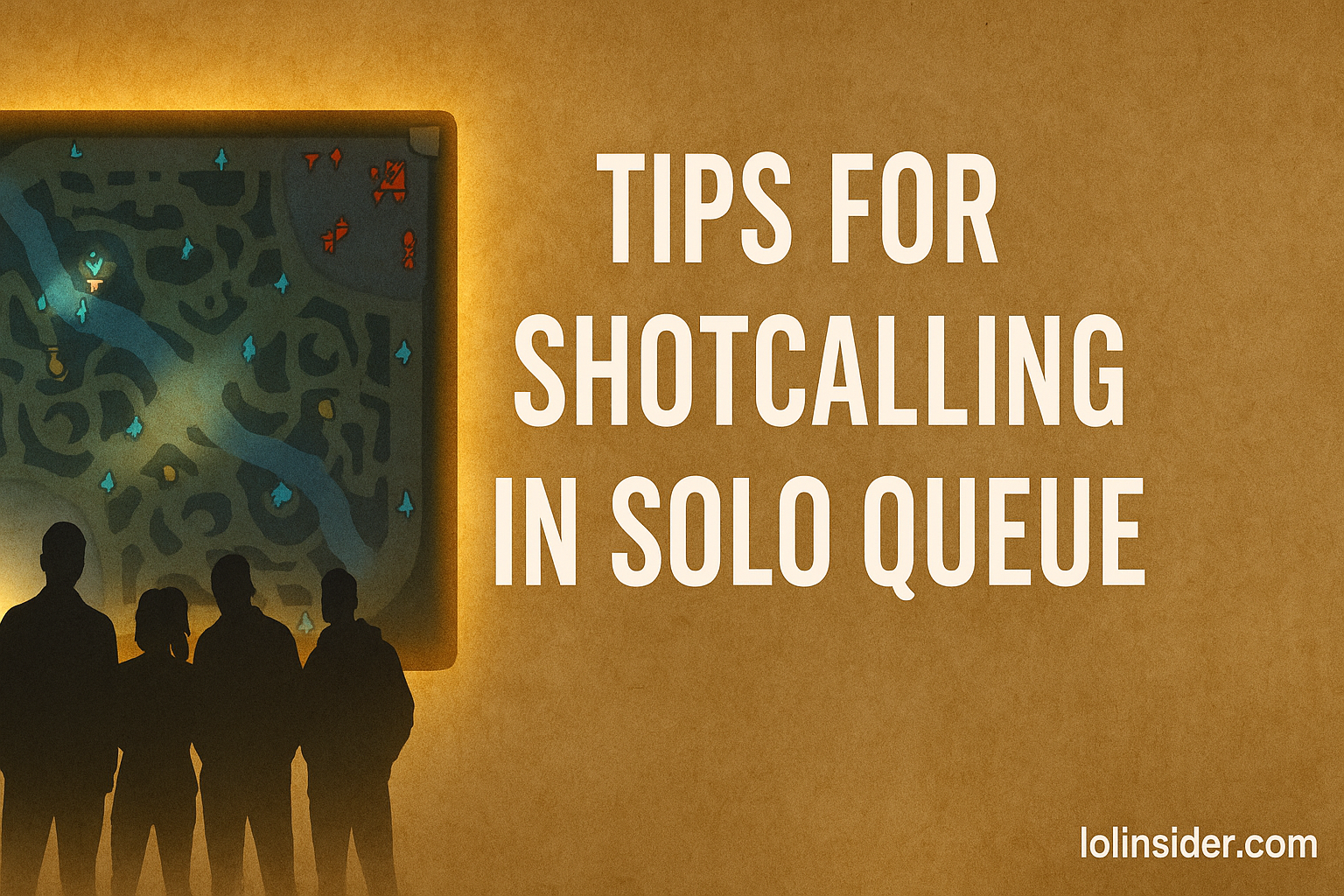Solo queue in League of Legends can often feel like chaos. Players from different backgrounds, communication styles, and champion pools come together in one game—and coordination can quickly break down. That’s where shotcalling comes in.
Even without voice chat, strong leadership and clear decision-making can turn a messy game into a coordinated victory. But shotcalling in solo queue is different from organized team play: you must adapt to strangers, avoid tilting teammates, and make quick calls that everyone can follow.
This article covers Tips for Shotcalling in Solo Queue, giving you the tools to guide your team, stay calm, and maximize your chances of winning.
1. Understand the Basics of Shotcalling
Shotcalling is the act of leading your team by making decisions. In League, this usually involves:
- Objective Calls: Dragon, Baron, Rift Herald, towers, inhibitors.
- Teamfight Calls: Engage, disengage, or split-push.
- Macro Calls: Lane assignments, rotations, vision control.
- Tempo Calls: When to reset, when to push, when to back away.
In solo queue, simplicity is king. Overly complex instructions don’t work with random teammates—focus on clear, high-impact calls.
2. Use Pings Effectively
You don’t need a microphone to be a leader in solo queue. Riot’s ping system is powerful when used correctly:
- On My Way Ping: Use to direct attention to a play.
- Danger Ping: Stop teammates from overextending.
- Objective Ping: Signal focus on Dragon or Baron.
- Assist Ping: Draw help to a lane or vision setup.
Pro Tip: Avoid spam-pinging. Overuse frustrates teammates. One clear ping is better than five angry ones.
3. Learn When to Take Control
Not every game requires you to be the leader. However, good shotcallers recognize moments when direction is needed:
- When your team is aimlessly farming after a fight—ping Baron.
- When enemies are dead—push towers instead of recalling.
- When the game is even—secure vision around the next Dragon.
Step up in those pivot moments and guide your team toward winning plays.
4. Keep Calls Simple and Clear
Your teammates don’t need a speech—they need focus. Examples:
- “Group mid after reset.”
- “Take Dragon, don’t chase.”
- “Back off, play for Baron.”
- “Push side lanes, no fight.”
Think of yourself as the compass, not the dictator.
5. Lead by Example
Shotcalls only work if your actions back them up. If you ping Baron but recall, your teammates won’t follow. Commit to your calls—even if they’re risky. The confidence often convinces others to join.
Golden Rule: A team following one bad call is stronger than a team making five different calls.
6. Control Tilt and Keep Morale Up
A shotcaller’s tone sets the team’s mood. Even without chat, your behavior matters:
- Don’t flame.
- Ping “Good Job” after plays.
- Stay calm after mistakes.
- Offer positive chat like “We scale, play safe.”
Tilt spreads like wildfire, but positivity boosts cooperation.
7. Prioritize Objectives Over Kills
Many solo queue games are thrown by chasing kills. Good shotcallers redirect focus:
- Secure towers after fights.
- Take Dragon/Baron instead of chasing.
- End the game when possible—don’t pad stats.
Your role is to win the game, not the scoreboard.
8. Adapt to Your Team’s Strengths
Shotcalling isn’t one-size-fits-all. Recognize your comp and adapt:
- Scaling comp: Avoid early fights, play safe, control Dragons.
- Early game comp: Force skirmishes around objectives.
- Split push comp: Assign lanes and pressure side towers.
Play to your win conditions, not just your personal preference.
9. Respect Solo Queue Autonomy
Remember: these aren’t your scrim teammates. They may ignore calls, make mistakes, or do their own thing. Don’t get frustrated—just adjust your shotcalling. If your ADC won’t group, play around them instead of arguing.
10. Shotcalling at Different Elos
- Low Elo (Iron–Gold): Keep it very simple. Ping objectives and group.
- Mid Elo (Platinum–Diamond): Emphasize vision and rotations.
- High Elo (Master+): Make predictive calls about enemy resets, Baron timers, and tempo plays.
The higher the elo, the more detailed your calls can be.
FAQs
Q: How do I shotcall without voice chat?
A: Use pings and short chat messages. Keep it simple: “Group,” “Dragon,” “Don’t fight.”
Q: What if my team ignores me?
A: Don’t tilt—keep making calm, logical calls. Often one or two teammates will follow, which is enough to swing a game.
Q: Should every role shotcall?
A: Jungle and support are natural leaders since they roam and control vision. But any role can step up with clear calls.
Q: How do I know if my call is right?
A: Sometimes you won’t. But a decisive call is better than hesitation. Learn from mistakes and refine.
Conclusion
Strong leadership often decides solo queue games. By keeping calls simple, using pings effectively, focusing on objectives, and maintaining a positive attitude, you can transform chaos into coordination.
These Tips for Shotcalling in Solo Queue are about more than mechanics—they’re about mindset. Be confident, stay calm, and guide your team to victory.







